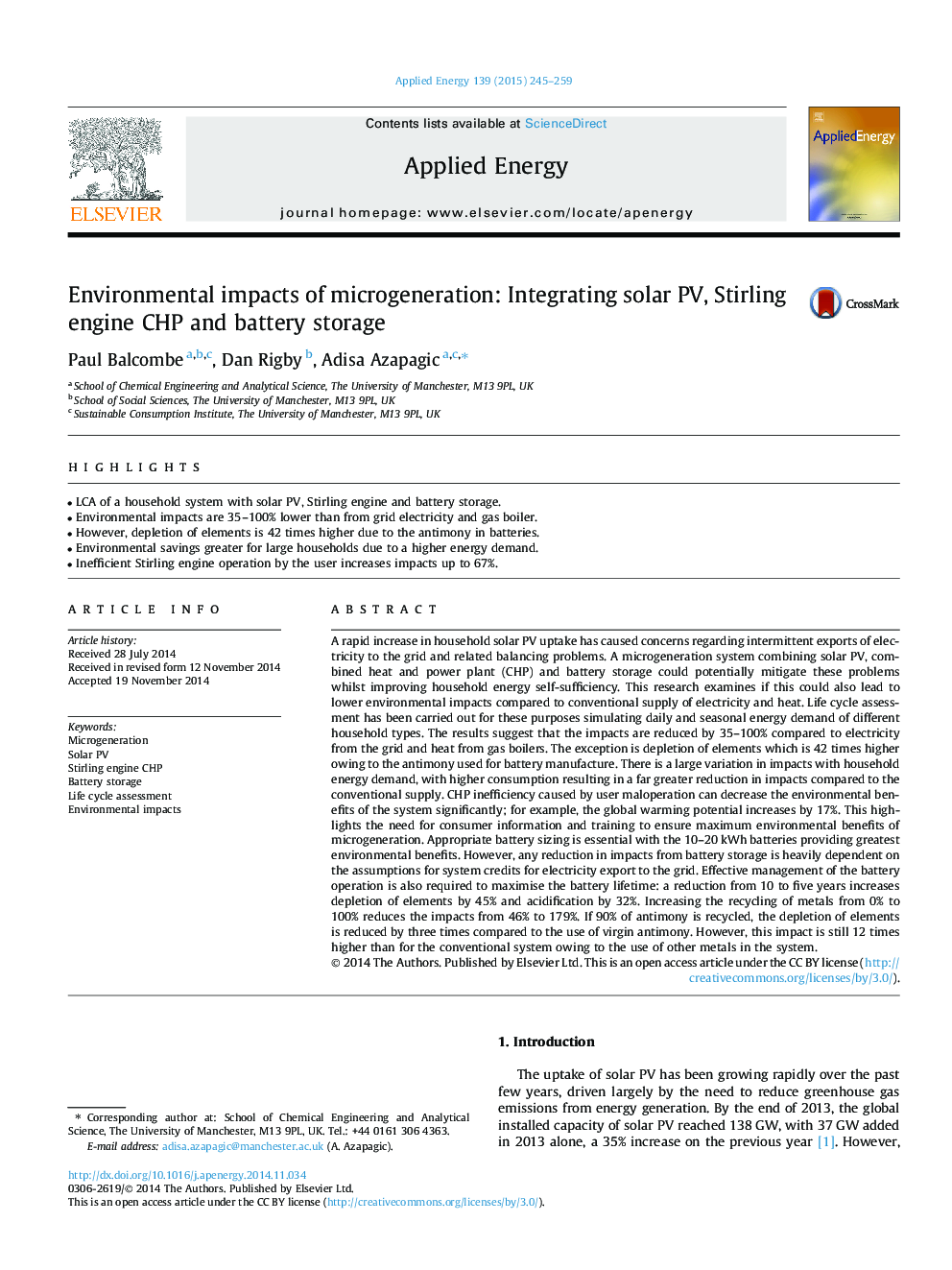| کد مقاله | کد نشریه | سال انتشار | مقاله انگلیسی | نسخه تمام متن |
|---|---|---|---|---|
| 6688109 | 501888 | 2015 | 15 صفحه PDF | دانلود رایگان |
عنوان انگلیسی مقاله ISI
Environmental impacts of microgeneration: Integrating solar PV, Stirling engine CHP and battery storage
دانلود مقاله + سفارش ترجمه
دانلود مقاله ISI انگلیسی
رایگان برای ایرانیان
کلمات کلیدی
موضوعات مرتبط
مهندسی و علوم پایه
مهندسی انرژی
مهندسی انرژی و فناوری های برق
پیش نمایش صفحه اول مقاله

چکیده انگلیسی
A rapid increase in household solar PV uptake has caused concerns regarding intermittent exports of electricity to the grid and related balancing problems. A microgeneration system combining solar PV, combined heat and power plant (CHP) and battery storage could potentially mitigate these problems whilst improving household energy self-sufficiency. This research examines if this could also lead to lower environmental impacts compared to conventional supply of electricity and heat. Life cycle assessment has been carried out for these purposes simulating daily and seasonal energy demand of different household types. The results suggest that the impacts are reduced by 35-100% compared to electricity from the grid and heat from gas boilers. The exception is depletion of elements which is 42 times higher owing to the antimony used for battery manufacture. There is a large variation in impacts with household energy demand, with higher consumption resulting in a far greater reduction in impacts compared to the conventional supply. CHP inefficiency caused by user maloperation can decrease the environmental benefits of the system significantly; for example, the global warming potential increases by 17%. This highlights the need for consumer information and training to ensure maximum environmental benefits of microgeneration. Appropriate battery sizing is essential with the 10-20Â kWh batteries providing greatest environmental benefits. However, any reduction in impacts from battery storage is heavily dependent on the assumptions for system credits for electricity export to the grid. Effective management of the battery operation is also required to maximise the battery lifetime: a reduction from 10 to five years increases depletion of elements by 45% and acidification by 32%. Increasing the recycling of metals from 0% to 100% reduces the impacts from 46% to 179%. If 90% of antimony is recycled, the depletion of elements is reduced by three times compared to the use of virgin antimony. However, this impact is still 12 times higher than for the conventional system owing to the use of other metals in the system.
ناشر
Database: Elsevier - ScienceDirect (ساینس دایرکت)
Journal: Applied Energy - Volume 139, 1 February 2015, Pages 245-259
Journal: Applied Energy - Volume 139, 1 February 2015, Pages 245-259
نویسندگان
Paul Balcombe, Dan Rigby, Adisa Azapagic,